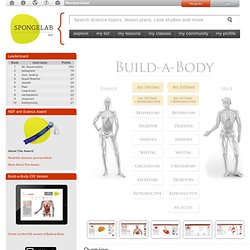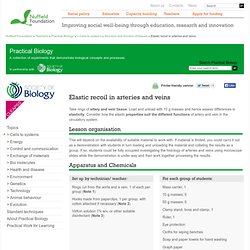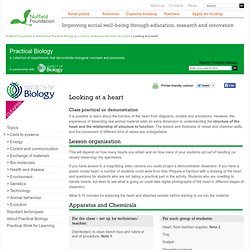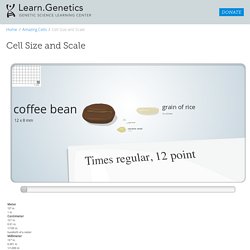

Build-A-Body. Overview Learn about the body's systems with this drag and drop game.

Choose organs from the organ tray, and place them in their correct position within the body to create organ systems. Build-A-Body is a drag and drop game where players are tasked with assembling an organ system from a set of organs. Players may then attempt case studies where a functional problem with a system must be linked to the organ affected. How to play Build-a-Body Choose organs from the organ tray, drag and drop them in their correct position within the body to build each system. Teaching with Build-a-Body Build-a-body is an awesome tool to introduce and teach concepts of human anatomy and human physiology. Early Childhood Education with Build-a-Body Where does my food go? WebGL not supported. Discover the Human Body: Interactive Anatomy Guide.
Elastic recoil in arteries and veins. Take rings of artery and vein tissue.

Load and unload with 10 g masses and hence assess differences in elasticity. Consider how the elastic properties suit the different functions of artery and vein in the circulatory system. This will depend on the availability of suitable material to work with. If material is limited, you could carry it out as a demonstration with students in turn loading and unloading the material and collating the results as a group. If so, students could be fully occupied investigating the histology of arteries and veins using microscope slides while the demonstration is under way and then work together processing the results. Mass carrier, 1 10 g masses, 5 50 g masses, 5 Clamp stand, boss and clamp, 1 Ruler, 1 Eye protection Cloths for wiping benches Soap and paper towels for hand washing Graph paper Calculator Rings cut from the aorta and a vein, 1 of each per group (Note 1) Hooks made from paperclips, 1 per group, with cotton attached if necessary (Note 2)
Looking at a heart. It is possible to learn about the function of the heart from diagrams, models and animations.

However, the experience of dissecting real animal material adds an extra dimension to understanding the structure of the heart and the relationship of structure to function. The texture and thickness of vessel and chamber walls, and the movement of different kind of valves are unforgettable. This will depend on how many hearts you obtain and on how many of your students opt out of handling (or closely observing) the specimens. If you have access to a magnifying video camera you could project a demonstration dissection. If you have a plastic model heart, a number of students could work from that. Allow 5-10 minutes for exploring the heart and attached vessels before starting to cut into the material.
Heart, from butcher/ supplier, Note 2 Tray Scalpel Dissecting scissors. Cell Song (Lazy Song) CellCraft Biology Game. Cells Song. Labelthecells. Cell structures. Cell menu. BioLogica, view 3D cells. The Cell: An Image Library. Cell Size and Scale. Some cells are visible to the unaided eye The smallest objects that the unaided human eye can see are about 0.1 mm long.

That means that under the right conditions, you might be able to see an ameoba proteus, a human egg, and a paramecium without using magnification. A magnifying glass can help you to see them more clearly, but they will still look tiny. Smaller cells are easily visible under a light microscope. It's even possible to make out structures within the cell, such as the nucleus, mitochondria and chloroplasts. To see anything smaller than 500 nm, you will need an electron microscope. Adenine The label on the nucleotide is not quite accurate.
How can an X chromosome be nearly as big as the head of the sperm cell? No, this isn't a mistake. The X chromosome is shown here in a condensed state, as it would appear in a cell that's going through mitosis. A chromosome is made up of genetic material (one long piece of DNA) wrapped around structural support proteins (histones). Carbon. Cells From Other Cells Song. 6 Characteristics of Life Song.